1 of 19
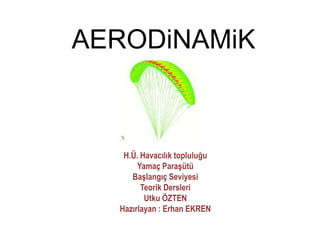
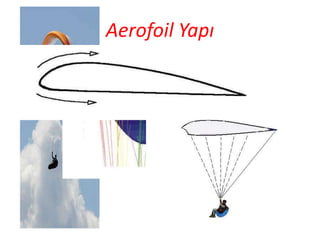
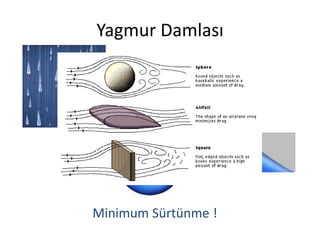


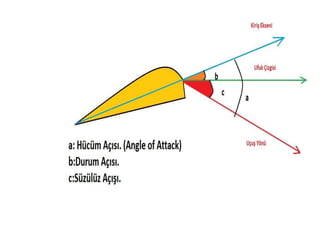
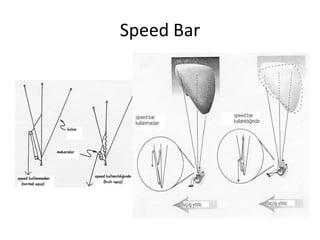




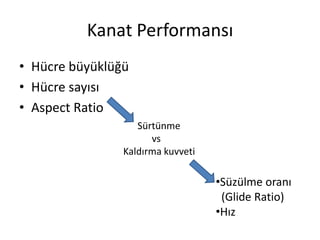

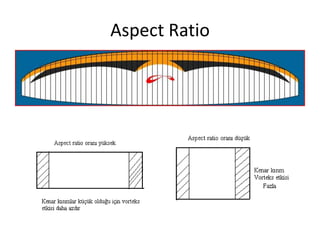
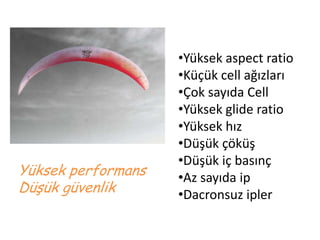
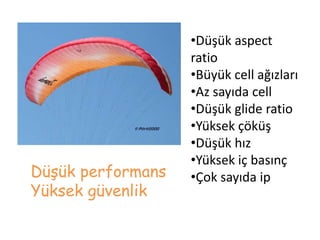

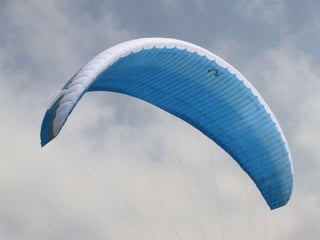

Ad
Recommended
EASA PART-66 MODULE 8.3 : THEORY OF FLIGHT
EASA PART-66 MODULE 8.3 : THEORY OF FLIGHTsoulstalker
╠²
The document discusses the fundamental forces acting on aircraft during flight, including lift, drag, thrust, and weight, and how they interact to maintain flight stability. It explains conditions for constant height and speed, the importance of properly arranging these forces, and the effects on the aircraft's nose position. Additionally, it touches on the concept of gliding and the flight envelope, which defines the aerodynamic and structural limitations of the aircraft.Forces acting in an airplane edwin pitty s.
Forces acting in an airplane edwin pitty s.Edwin Pitty Sanchez
╠²
The four main forces acting on an airplane in flight are thrust, drag, lift, and weight. Thrust is produced by the engine and propeller and opposes drag. Drag is a retarding force caused by air flowing around the airplane. Weight pulls the airplane downward due to gravity, and lift opposes weight and is produced by air flowing over the wings. Understanding and controlling these four forces through power and flight controls is essential to flight.High Speed Aerodynamics
High Speed Aerodynamicslccmechanics
╠²
The document discusses high-speed aerodynamics and several key concepts, including that compressibility effects become important at transonic and supersonic speeds. It describes research done on high-speed aircraft like the Bell X-1, which broke the sound barrier in 1947. The document also covers topics like the speed of sound, different flight regimes (subsonic, transonic, supersonic, hypersonic), and shock wave patterns that form at supersonic speeds.Pr 2
Pr 2Sharada Devi
╠²
The document provides an overview of aerodynamics for a Piper Archer, covering topics such as basic aerodynamic principles like Newton's laws of motion and Bernoulli's principle. It discusses concepts like center of pressure, center of gravity, load factor, airspeeds, stalls, stability, drag and boundary layers. Key points covered include how forward and aft center of gravity affects an airplane, the relationship between load factor and stall speed, and the different types of airspeeds and drags.Angle of attack | Flight Mechanics | GATE Aerospace
Angle of attack | Flight Mechanics | GATE AerospaceAge of Aerospace
╠²
This document provides an overview of flight mechanics topics including angle of attack. It discusses the angle of attack (AOA) as the angle between the relative wind and chord line of an airfoil. Greater AOA results in greater lift but also greater drag. Higher AOA variation can cause stall from loss of lift. It recommends visualizing AOA effects using NASA's FoilSim tool. The document also outlines core topics like aircraft configurations, flight instruments, aerodynamic forces, airplane performance, stability, and dynamic stability to be covered.Basic Aerodynamics Ii Stability Large
Basic Aerodynamics Ii Stability Largelccmechanics
╠²
The document discusses the concepts of stability, maneuverability, and controllability as they relate to aircraft design. It states that stability causes an aircraft to return to steady flight after a disturbance, maneuverability allows the pilot to move the aircraft easily about its axes, and controllability is the ability to respond to pilot inputs. However, increasing one of these characteristics typically decreases another, so aircraft designs involve compromises. The document then examines longitudinal, lateral, and directional stability in more detail.Theory of flight final
Theory of flight finalJohn Christian De Leon
╠²
This document discusses aircraft flight control systems. It describes three main categories of flight controls: primary, secondary, and auxiliary.
Primary flight controls include elevators, ailerons, and the rudder. Elevators control pitch, ailerons control roll, and the rudder controls yaw. Secondary flight controls include trim tabs which help balance aircraft control forces. Auxiliary controls include flaps and other high lift devices which allow aircraft to fly at slower speeds. The document provides details on how each of these various control surfaces and systems function.aerodynamics.ppt
aerodynamics.pptNamLe218588
╠²
The document provides an overview of aerodynamics as it relates to the Piper Archer aircraft. It discusses key aerodynamic concepts such as Newton's laws of motion, Bernoulli's principle, the center of pressure, stability, load factors, drag, and how these concepts impact aircraft design and flight characteristics. The document is intended as a study guide for pilots to better understand the aerodynamics of the Piper Archer.EASA PART-66 MODULE 8.4 : FLIGHT STABILITY AND DYNAMICS
EASA PART-66 MODULE 8.4 : FLIGHT STABILITY AND DYNAMICSsoulstalker
╠²
The document discusses the stability and dynamics of an aircraft, focusing on its three axes: longitudinal, lateral, and vertical. It details how control surfaces like ailerons, elevators, and rudders manage aircraft attitude and stability in flight, as well as various types of stability and motion associated with these axes. Additionally, it outlines flight control surfaces' function, including primary, secondary, and auxiliary groups, and explains how different flaps and high-lift devices enhance performance during takeoff and landing.Sideslip | Flight Mechanics | GATE Aerospace
Sideslip | Flight Mechanics | GATE AerospaceAge of Aerospace
╠²
The document presents an overview of flight mechanics, specifically focusing on sideslip and its significance in aerodynamics for aerospace engineering students. It covers essential concepts such as angle of attack, sideslip angle, various types of slip, and the calculation and measurement of these parameters. Additionally, it discusses the implications of sideslip during crosswind landings and provides references for further reading.Principles of flight
Principles of flightThomas Bergen
╠²
The document explains the principles of flight, detailing the four forces (lift, weight, thrust, and drag) that enable an aircraft to become airborne. It discusses airplane stability, focusing on longitudinal and lateral stability, as well as the factors influencing them, such as design features and load factors. Additionally, it highlights precautions for dealing with wake vortices and turbulence during takeoff and landing behind larger aircraft.Basic Aerodynamics To Stability
Basic Aerodynamics To Stabilitylccmechanics
╠²
The document discusses the basics of aerodynamics, including the atmosphere, airfoils, and forces acting on aircraft in flight. It describes standard day conditions for pressure, temperature, and density. It explains how airfoils generate lift through Bernoulli's principle and Newton's laws. Forces like lift, weight, thrust, and drag are defined as vectors, and how aircraft maintain equilibrium in straight and level flight.Rvsm ecn seminario resumido 97eucliarte
╠²
Este documento trata sobre la Reducci├│n de la Separaci├│n Vertical M├Łnima (RVSM) y contiene informaci├│n sobre los niveles de vuelo en espacio a├®reo RVSM, la clasificaci├│n de vuelos, las separaciones empleadas, las caracter├Łsticas de la RVSM en Colombia y la fraseolog├Ła utilizada. Tambi├®n incluye una bibliograf├Ła de documentos sobre este tema.Swept wing configuration
Swept wing configuration Buddhikaaero
╠²
This presentation discusses swept wing configurations and their applications for supersonic flight. Swept wings reduce wave drag at transonic speeds by angling shock waves away from the aircraft. Swept wings were first developed in Germany in the 1930s and became prominent with aircraft like the MiG-15 and F-86. Variations include forward swept wings, which provide maneuverability but are expensive, and variable sweep wings which can change sweep angle during flight. Swept wings provide benefits like lateral stability and delaying compressibility effects at transonic speeds.Flying Circuits
Flying Circuits Aviationshared
╠²
This document provides an overview of the principles of flight, including the four forces acting on an aircraft (lift, weight, thrust, and drag), the operation of flight controls, and the use of aircraft instruments. It discusses the mechanics of how wings generate lift, the function of flaps during takeoff and landing, and the importance of understanding the aircraft's control systems for safe flight operations. Additionally, it highlights the significance of proper training for simulated flight and the understanding required to fly in the circuit around airfields.Aircraft parts
Aircraft partsshankar11122
╠²
The document defines and describes various parts of an aircraft including control surfaces like the aileron and elevator that control rolling and pitching movements, other components like the horizontal and vertical stabilizers that provide stability, and various high-lift devices such as flaps, spoilers and slats. It also mentions the cockpit, landing gear, engines and related components, and additional elements like winglets and vortex generators that influence aerodynamics and performance.Types of drag
Types of dragdekkalavinay
╠²
There are several types of drag that act on an aircraft as it moves through the air:
1) Parasite drag includes form or pressure drag from the aircraft's shape, skin friction drag from the surface, and interference drag between different parts.
2) Lift induced drag is caused by the direction of lift being perpendicular to the airflow.
3) Wave drag occurs at transonic and supersonic speeds and is caused by shock waves forming on the aircraft.
Methods to reduce drag include streamlining the aircraft's shape to reduce form drag, making surfaces smooth to reduce skin friction, adding winglets to improve lift and reduce induced drag, and research into reducing wave drag at high speeds.Flight basics
Flight basicsSri Ramya
╠²
1) The document provides an overview of flight basics, including the four forces of flight (lift, weight, thrust, drag), Newton's laws of motion, Bernoulli's principle, airfoils, parts of an airplane, stability, and control.
2) It explains concepts such as angles of attack and incidence, how wings generate lift, the role of thrust and drag, and the three axes of movement for an aircraft.
3) The document discusses different types of stability, including static and dynamic stability, and how control surfaces like ailerons, elevators, and rudders are used to control an airplane's movement around each axis.Airfoil terminology
Airfoil terminologySmart Vino
╠²
This document discusses airfoil and rotor blade terminology. It defines symmetrical and nonsymmetrical airfoils and their characteristics. It also defines the angles of incidence, attack, and describes how collective and cyclic feathering changes these angles to control the helicopter. Flapping, lead, and lag are also summarized as important motions of the rotor blades that help control the aircraft.1 Evolution And Type Of Structures
1 Evolution And Type Of Structureslccmechanics
╠²
The document summarizes the evolution of aircraft structures from early designs using wooden ribs and fabric to modern aluminum and composite designs. It describes key structural components such as those that produce lift (wings, airfoils), control (elevators, ailerons, rudders), modify lift (flaps, slats), and hold other components. Early aircraft had open wooden frameworks and fabric coverings while later warplanes used metal tubing and stressed skin construction. Modern jets widely use semi-monocoque construction.Flight instruments chapter 07
Flight instruments chapter 07junio_oliveira
╠²
This document discusses flight instruments that utilize the pitot-static system, including the airspeed indicator, altimeter, and vertical speed indicator. It explains that the pitot tube measures total pressure, while the static ports measure ambient pressure, and the difference between these pressures drives the readings on the instruments. It also discusses factors like non-standard temperature and pressure that can introduce errors, and the importance of setting the correct altimeter setting to compensate for these errors and obtain an accurate altitude reading.Basic Principles of Flight.pptx
Basic Principles of Flight.pptxRArivazhaganAssistan
╠²
The document discusses the basic principles of flight, including the four main forces acting on an airplane (lift, weight, thrust, drag), how flight controls like the elevator, ailerons, and rudder work to control the aircraft, aerodynamic concepts like Bernoulli's principle and how wings and propellers generate lift and thrust, the basics of take-off, flight, and landing, and maneuvers, turns and circuit patterns. It provides explanations of these fundamental aspects of flight to build knowledge for pilots.EASA PART-66 MODULE 8.2 : AERODYNAMICS
EASA PART-66 MODULE 8.2 : AERODYNAMICSsoulstalker
╠²
The document discusses the aerodynamic principles affecting aircraft performance, particularly focusing on the shapes of airfoils and their impact on lift and drag. It explains concepts such as angle of attack, camber, and the various types of drag that affect flight efficiency. Additionally, the document highlights the importance of streamlined shapes and the effects of airflow behavior around different wing designs.Basic aerodynamics
Basic aerodynamicsAeronautical Division
╠²
This document provides an overview of basic aerodynamic principles and aircraft flight theory. It covers key topics such as the atmosphere, Newton's laws of motion, Bernoulli's principle, airfoils, the four forces of flight, stability and control surfaces. The presentation introduces fundamental concepts including pressure, density, humidity, inertia, lift, drag, thrust, weight, angles of attack and incidence, and the three axes of movement. It also explains how stability is achieved through aircraft design elements like dihedral wings, sweepback, and keel effect.aircraft drag reduction
aircraft drag reductionDhanasHree WagHmare
╠²
This document is a seminar report submitted by Dhanashree Manohar Waghmare on aircraft drag reduction techniques. The report contains an introduction on the importance of reducing aircraft drag. It then provides a literature review on relevant topics like aerodynamics, fluid mechanics, previous studies on drag reduction. The objectives are to study aerodynamic principles, forces on aircraft, types of drag and reduction methods. The body of the report discusses these topics in detail with diagrams. It covers concepts like aerodynamics, aircraft wings, forces, types of drag and techniques to reduce skin friction, lift-induced and wave drag. The report aims to provide a comprehensive overview of aircraft drag and methods to reduce it.Threat and Error Management in Aviation
Threat and Error Management in AviationTilak Ramaprakash
╠²
The Line Operations Safety Audit (LOSA) program evolved into the Threat and Error Management (TEM) framework, which helps flight personnel manage threats and errors that may compromise aviation safety. TEM addresses three key components: threats, errors, and undesired aircraft states, highlighting the distinction between internal and external threats and categorizing errors into slips, lapses, mistakes, and violations. The framework is globally recognized and applicable to various aviation roles, aiming to prevent serious incidents before they occur.More Related Content
What's hot (20)
Theory of flight final
Theory of flight finalJohn Christian De Leon
╠²
This document discusses aircraft flight control systems. It describes three main categories of flight controls: primary, secondary, and auxiliary.
Primary flight controls include elevators, ailerons, and the rudder. Elevators control pitch, ailerons control roll, and the rudder controls yaw. Secondary flight controls include trim tabs which help balance aircraft control forces. Auxiliary controls include flaps and other high lift devices which allow aircraft to fly at slower speeds. The document provides details on how each of these various control surfaces and systems function.aerodynamics.ppt
aerodynamics.pptNamLe218588
╠²
The document provides an overview of aerodynamics as it relates to the Piper Archer aircraft. It discusses key aerodynamic concepts such as Newton's laws of motion, Bernoulli's principle, the center of pressure, stability, load factors, drag, and how these concepts impact aircraft design and flight characteristics. The document is intended as a study guide for pilots to better understand the aerodynamics of the Piper Archer.EASA PART-66 MODULE 8.4 : FLIGHT STABILITY AND DYNAMICS
EASA PART-66 MODULE 8.4 : FLIGHT STABILITY AND DYNAMICSsoulstalker
╠²
The document discusses the stability and dynamics of an aircraft, focusing on its three axes: longitudinal, lateral, and vertical. It details how control surfaces like ailerons, elevators, and rudders manage aircraft attitude and stability in flight, as well as various types of stability and motion associated with these axes. Additionally, it outlines flight control surfaces' function, including primary, secondary, and auxiliary groups, and explains how different flaps and high-lift devices enhance performance during takeoff and landing.Sideslip | Flight Mechanics | GATE Aerospace
Sideslip | Flight Mechanics | GATE AerospaceAge of Aerospace
╠²
The document presents an overview of flight mechanics, specifically focusing on sideslip and its significance in aerodynamics for aerospace engineering students. It covers essential concepts such as angle of attack, sideslip angle, various types of slip, and the calculation and measurement of these parameters. Additionally, it discusses the implications of sideslip during crosswind landings and provides references for further reading.Principles of flight
Principles of flightThomas Bergen
╠²
The document explains the principles of flight, detailing the four forces (lift, weight, thrust, and drag) that enable an aircraft to become airborne. It discusses airplane stability, focusing on longitudinal and lateral stability, as well as the factors influencing them, such as design features and load factors. Additionally, it highlights precautions for dealing with wake vortices and turbulence during takeoff and landing behind larger aircraft.Basic Aerodynamics To Stability
Basic Aerodynamics To Stabilitylccmechanics
╠²
The document discusses the basics of aerodynamics, including the atmosphere, airfoils, and forces acting on aircraft in flight. It describes standard day conditions for pressure, temperature, and density. It explains how airfoils generate lift through Bernoulli's principle and Newton's laws. Forces like lift, weight, thrust, and drag are defined as vectors, and how aircraft maintain equilibrium in straight and level flight.Rvsm ecn seminario resumido 97eucliarte
╠²
Este documento trata sobre la Reducci├│n de la Separaci├│n Vertical M├Łnima (RVSM) y contiene informaci├│n sobre los niveles de vuelo en espacio a├®reo RVSM, la clasificaci├│n de vuelos, las separaciones empleadas, las caracter├Łsticas de la RVSM en Colombia y la fraseolog├Ła utilizada. Tambi├®n incluye una bibliograf├Ła de documentos sobre este tema.Swept wing configuration
Swept wing configuration Buddhikaaero
╠²
This presentation discusses swept wing configurations and their applications for supersonic flight. Swept wings reduce wave drag at transonic speeds by angling shock waves away from the aircraft. Swept wings were first developed in Germany in the 1930s and became prominent with aircraft like the MiG-15 and F-86. Variations include forward swept wings, which provide maneuverability but are expensive, and variable sweep wings which can change sweep angle during flight. Swept wings provide benefits like lateral stability and delaying compressibility effects at transonic speeds.Flying Circuits
Flying Circuits Aviationshared
╠²
This document provides an overview of the principles of flight, including the four forces acting on an aircraft (lift, weight, thrust, and drag), the operation of flight controls, and the use of aircraft instruments. It discusses the mechanics of how wings generate lift, the function of flaps during takeoff and landing, and the importance of understanding the aircraft's control systems for safe flight operations. Additionally, it highlights the significance of proper training for simulated flight and the understanding required to fly in the circuit around airfields.Aircraft parts
Aircraft partsshankar11122
╠²
The document defines and describes various parts of an aircraft including control surfaces like the aileron and elevator that control rolling and pitching movements, other components like the horizontal and vertical stabilizers that provide stability, and various high-lift devices such as flaps, spoilers and slats. It also mentions the cockpit, landing gear, engines and related components, and additional elements like winglets and vortex generators that influence aerodynamics and performance.Types of drag
Types of dragdekkalavinay
╠²
There are several types of drag that act on an aircraft as it moves through the air:
1) Parasite drag includes form or pressure drag from the aircraft's shape, skin friction drag from the surface, and interference drag between different parts.
2) Lift induced drag is caused by the direction of lift being perpendicular to the airflow.
3) Wave drag occurs at transonic and supersonic speeds and is caused by shock waves forming on the aircraft.
Methods to reduce drag include streamlining the aircraft's shape to reduce form drag, making surfaces smooth to reduce skin friction, adding winglets to improve lift and reduce induced drag, and research into reducing wave drag at high speeds.Flight basics
Flight basicsSri Ramya
╠²
1) The document provides an overview of flight basics, including the four forces of flight (lift, weight, thrust, drag), Newton's laws of motion, Bernoulli's principle, airfoils, parts of an airplane, stability, and control.
2) It explains concepts such as angles of attack and incidence, how wings generate lift, the role of thrust and drag, and the three axes of movement for an aircraft.
3) The document discusses different types of stability, including static and dynamic stability, and how control surfaces like ailerons, elevators, and rudders are used to control an airplane's movement around each axis.Airfoil terminology
Airfoil terminologySmart Vino
╠²
This document discusses airfoil and rotor blade terminology. It defines symmetrical and nonsymmetrical airfoils and their characteristics. It also defines the angles of incidence, attack, and describes how collective and cyclic feathering changes these angles to control the helicopter. Flapping, lead, and lag are also summarized as important motions of the rotor blades that help control the aircraft.1 Evolution And Type Of Structures
1 Evolution And Type Of Structureslccmechanics
╠²
The document summarizes the evolution of aircraft structures from early designs using wooden ribs and fabric to modern aluminum and composite designs. It describes key structural components such as those that produce lift (wings, airfoils), control (elevators, ailerons, rudders), modify lift (flaps, slats), and hold other components. Early aircraft had open wooden frameworks and fabric coverings while later warplanes used metal tubing and stressed skin construction. Modern jets widely use semi-monocoque construction.Flight instruments chapter 07
Flight instruments chapter 07junio_oliveira
╠²
This document discusses flight instruments that utilize the pitot-static system, including the airspeed indicator, altimeter, and vertical speed indicator. It explains that the pitot tube measures total pressure, while the static ports measure ambient pressure, and the difference between these pressures drives the readings on the instruments. It also discusses factors like non-standard temperature and pressure that can introduce errors, and the importance of setting the correct altimeter setting to compensate for these errors and obtain an accurate altitude reading.Basic Principles of Flight.pptx
Basic Principles of Flight.pptxRArivazhaganAssistan
╠²
The document discusses the basic principles of flight, including the four main forces acting on an airplane (lift, weight, thrust, drag), how flight controls like the elevator, ailerons, and rudder work to control the aircraft, aerodynamic concepts like Bernoulli's principle and how wings and propellers generate lift and thrust, the basics of take-off, flight, and landing, and maneuvers, turns and circuit patterns. It provides explanations of these fundamental aspects of flight to build knowledge for pilots.EASA PART-66 MODULE 8.2 : AERODYNAMICS
EASA PART-66 MODULE 8.2 : AERODYNAMICSsoulstalker
╠²
The document discusses the aerodynamic principles affecting aircraft performance, particularly focusing on the shapes of airfoils and their impact on lift and drag. It explains concepts such as angle of attack, camber, and the various types of drag that affect flight efficiency. Additionally, the document highlights the importance of streamlined shapes and the effects of airflow behavior around different wing designs.Basic aerodynamics
Basic aerodynamicsAeronautical Division
╠²
This document provides an overview of basic aerodynamic principles and aircraft flight theory. It covers key topics such as the atmosphere, Newton's laws of motion, Bernoulli's principle, airfoils, the four forces of flight, stability and control surfaces. The presentation introduces fundamental concepts including pressure, density, humidity, inertia, lift, drag, thrust, weight, angles of attack and incidence, and the three axes of movement. It also explains how stability is achieved through aircraft design elements like dihedral wings, sweepback, and keel effect.aircraft drag reduction
aircraft drag reductionDhanasHree WagHmare
╠²
This document is a seminar report submitted by Dhanashree Manohar Waghmare on aircraft drag reduction techniques. The report contains an introduction on the importance of reducing aircraft drag. It then provides a literature review on relevant topics like aerodynamics, fluid mechanics, previous studies on drag reduction. The objectives are to study aerodynamic principles, forces on aircraft, types of drag and reduction methods. The body of the report discusses these topics in detail with diagrams. It covers concepts like aerodynamics, aircraft wings, forces, types of drag and techniques to reduce skin friction, lift-induced and wave drag. The report aims to provide a comprehensive overview of aircraft drag and methods to reduce it.Threat and Error Management in Aviation
Threat and Error Management in AviationTilak Ramaprakash
╠²
The Line Operations Safety Audit (LOSA) program evolved into the Threat and Error Management (TEM) framework, which helps flight personnel manage threats and errors that may compromise aviation safety. TEM addresses three key components: threats, errors, and undesired aircraft states, highlighting the distinction between internal and external threats and categorizing errors into slips, lapses, mistakes, and violations. The framework is globally recognized and applicable to various aviation roles, aiming to prevent serious incidents before they occur.Viewers also liked (8)
U├¦ak Motorlar─▒ ve Donan─▒mlar─▒
U├¦ak Motorlar─▒ ve Donan─▒mlar─▒Erhan D─░LAVER
╠²
Motorlar─▒n tarihsel geli┼¤im s├╝reci ele al─▒narak, ge├¦mi┼¤ten g├╝n├╝m├╝ze kadar var olan motor ├¦e┼¤itleri tan─▒t─▒lm─▒┼¤t─▒r.H A V A C I L I K VE UZAY TEKNOLOJ─░LER─░
H A V A C I L I K VE UZAY TEKNOLOJ─░LER─░Seda Eskiler
╠²
globalaviationaerospace.com
SEKTÛREL BÜYÜKLÜKLER
POLİTİKA VE DÜZENLEMELER
PROJE ve FAAL─░YETLER
ULUSLARARASI ─░L─░┼×K─░LER
─░┼×LETME FAAL─░YETLER─░Ad
Aerodinamik
- 1. AERODiNAMiK H.├£. Havac─▒l─▒k toplulu─¤u Yama├¦ Para┼¤├╝t├╝ Ba┼¤lang─▒├¦ Seviyesi Teorik Dersleri Utku ├¢ZTEN Haz─▒rlayan : Erhan EKREN
- 4. Bernoulli Prensibi ŌĆśŌĆÖAk─▒┼¤kan─▒n h─▒z─▒ artt─▒k├¦a bas─▒nc─▒ azal─▒r.ŌĆÖŌĆÖ
- 7. Speed Bar
- 8. SpeedŌĆÖe basarsak H├╝cum a├¦─▒s─▒ azal─▒r Kanat h─▒zlan─▒r Fren al─▒rsak H├╝cum a├¦─▒s─▒ artar Kanat yava┼¤lar
- 10. Stoll ŌĆśŌĆÖStol kanad─▒n u├¦uculu─¤unu tamam─▒yla yitirmesidirŌĆÖŌĆÖ H├╝cum a├¦─▒s─▒n─▒n aerodinamik kuvvetleri yok edecek kadar artmas─▒yla meydana gelir
- 11. Diren├¦ler ŌĆó Parasitik Diren├¦ ’āś Profil:aerofil yap─▒dan dolay─▒ olu┼¤an %4 l├╝k diren├¦ ’āś Form:Pilotun kanat alt─▒nda olu┼¤turdu─¤u diren├¦ ŌĆó ─░nduced Diren├¦ : Para┼¤├╝t├╝n hava i├¦inde ilerlemesi ile olu┼¤an,havan─▒n d├╝zg├╝n yap─▒s─▒n─▒n bozulmas─▒ ve arkada tamamen bozuk bir hava yap─▒s─▒ b─▒rakmas─▒ ŌĆó Diren├¦leri etkileyen fakt├Črler ?
- 12. Kanat Performans─▒ ŌĆó H├╝cre b├╝y├╝kl├╝─¤├╝ ŌĆó H├╝cre say─▒s─▒ ŌĆó Aspect Ratio S├╝rt├╝nme vs Kald─▒rma kuvveti ŌĆóS├╝z├╝lme oran─▒ (Glide Ratio) ŌĆóH─▒z
- 14. Aspect Ratio
- 15. Y├╝ksek performans D├╝┼¤├╝k g├╝venlik ŌĆóY├╝ksek aspect ratio ŌĆóK├╝├¦├╝k cell a─¤─▒zlar─▒ ŌĆó├ćok say─▒da Cell ŌĆóY├╝ksek glide ratio ŌĆóY├╝ksek h─▒z ŌĆóD├╝┼¤├╝k ├¦├Čk├╝┼¤ ŌĆóD├╝┼¤├╝k i├¦ bas─▒n├¦ ŌĆóAz say─▒da ip ŌĆóDacronsuz ipler
- 16. D├╝┼¤├╝k performans Y├╝ksek g├╝venlik ŌĆóD├╝┼¤├╝k aspect ratio ŌĆóB├╝y├╝k cell a─¤─▒zlar─▒ ŌĆóAz say─▒da cell ŌĆóD├╝┼¤├╝k glide ratio ŌĆóY├╝ksek ├¦├Čk├╝┼¤ ŌĆóD├╝┼¤├╝k h─▒z ŌĆóY├╝ksek i├¦ bas─▒n├¦ ŌĆó├ćok say─▒da ip
- 19. Andy Hediger omega 5 ile PWC (Paragliding World Cup-Yama├¦para┼¤├╝t├╝ D├╝nya ┼×ampiyonas─▒) 2000ŌĆÖ i kazand─▒.
